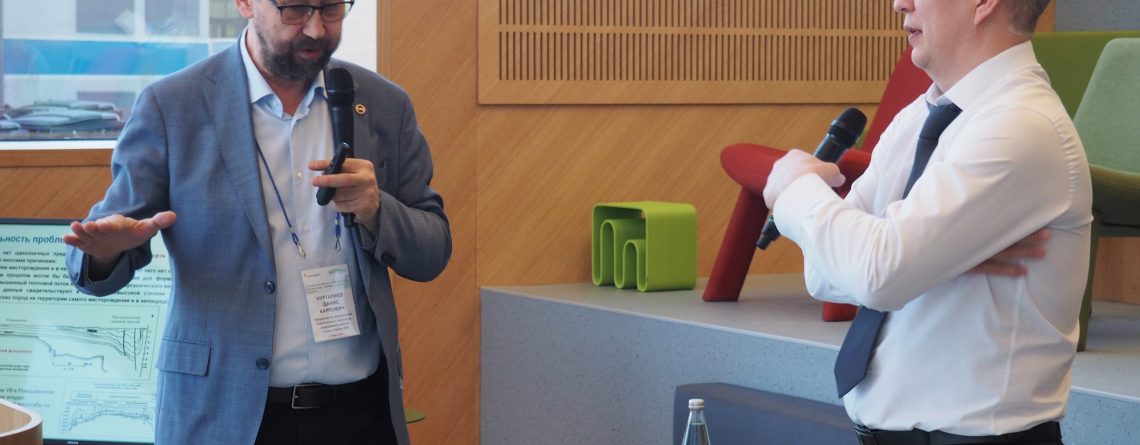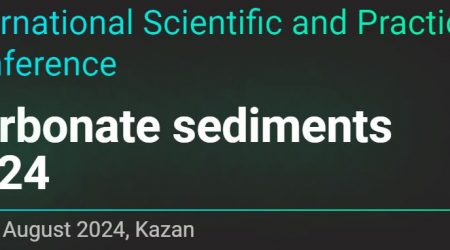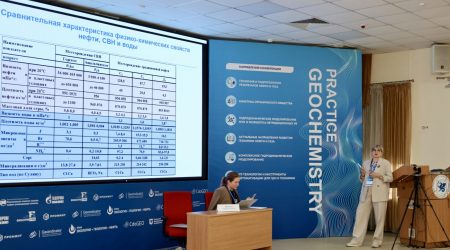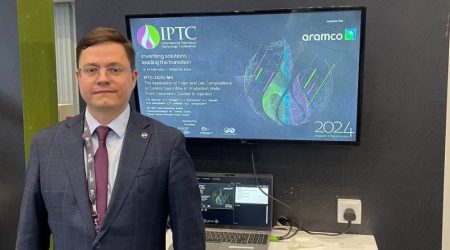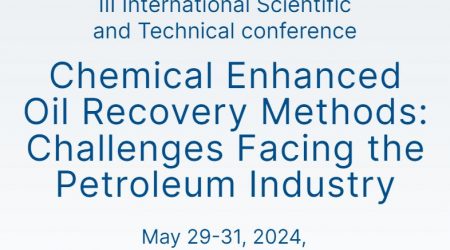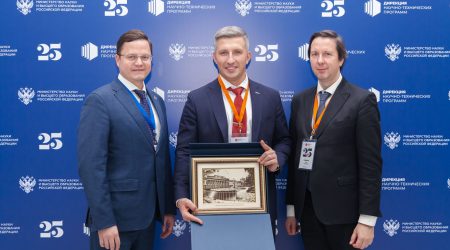Institute experts contribute to geological seminar in Almetyevsk


On 19 March, Almetyevsk’s Higher School of Petroleum hold a seminar on contemporary questions of geological exploration and subsoil studies. The event was organized by Tatneft and TatNIPIneft Institute. Among the contributors were scientists of Kazan Federal University and Moscow State University.
Our University was represented by Vice-Rector for Earth Sciences Danis Nurgaliev, Deputy Director of IGPT for Innovation Vladislav Sudakov, Junior Research Associate (Laboratory of Studies of the State and Evolution of Underground Reservoirs) Maria Shipaeva, Engineer (Center for Geothermochronology) Yevgeniya Morozova, Engineer Pavel Kotler, and Engineer Anna Kulikova.
Yevgeniya Morozova’s report was titled Typization of terrigenous Devonian petroleum by biomarker and isotope research. She comments, “The report is devoted to the results of the study of 200 oil samples of the terrigenous Devonian, which were collected from the fields of the Republic of Tatarstan and Samara Region. Oil from the North Tatar, South Tatar vaults (including Romashkino and Novo-Yelkhovo fields), Melekes depression, Sernovod-Abdullino aulacogen, and Buzuluk depression were considered. Biomarker and isotope studies made it possible to typify fluids and outline the assumed directions of hydrocarbon migration processes, as well as to make assumptions about the probable sources of the studied oils. The seminar allowed to exchange ideas with researchers from TatNIPIneft Institute, Moscow State University, and to get useful recommendations on data analysis and to outline a plan for further research.
Maria Shipaeva speaks about her paper The content of formation waters of the deposits of the Republic of Tatarstan, “The report was devoted to the analysis of micro- and macro-component composition of formation water samples accompanying oil in the deposits of the supergiant Romashkino field and other fields of Tatarstan and Samara regions. The results showed that formation waters, unchanged by technogenic impact and retaining their high mineralization, are different in the north and south of the Republic of Tatarstan. The waters of the Romashkino field do not have the properties of primary formation water, but artificially desalinated under the influence of the reservoir pressure maintenance system actively operating in the field.”
Kotler and Kulikova’s paper was called Thermal history of a sedimentation basin based on thermal chronology studies. They showed that the studied area of the South Tatar arch was characterized by high geodynamic activity in the last few million years. If the deposits of the Romashkino field were formed in the Paleozoic and Mesozoic eras, such high tectonic activity would have led to the destruction of the deposits. Based on this, it is assumed that the unique Romashkino field was formed in the neotectonic period and is quite young.
Vice-Rector Nurgaliev reported on the model of oil deposit formation in our region in its current state, “The seminar was devoted to the results of geochemical study of the Romashkino field. The theory of the origin of this field was voiced at the seminar for the first time. It should be noted that understanding the origin of the Romashkino supergiant is an important scientific and practical problem. Its formation, development and natural dissipation (destruction) continue to influence both natural and socio-economic processes”
The Vice-Rector notes that the data available today on the Romashkino field do not allow making a strictly unambiguous choice between the two theories of oil origin. Although the geochemical characteristics of the Romashkino field oil are not fundamentally different from the oil of other fields formed according to the classical “organic” scheme, other facts and arguments indicate the possibility of alternative non-standard mechanisms of formation of this unique field.
He emphasizes that establishing the sources of the Romashkino field, the dynamics of its formation and fracture is of the utmost practical importance for assessing its hydrocarbon resources and reserves, migration paths and deposit location, and will also allow for its optimal development, taking into account information on the actual resources and their location and dynamics. Practically, it comes down to understanding the process of field formation, establishing the migration paths and nature of reserves placement, and forecasting missed intervals. The presentations provoked a large number of questions and a heated discussion. The seminar ended with a round table discussion on the prospects of geological exploration development in the Volga-Ural region.



